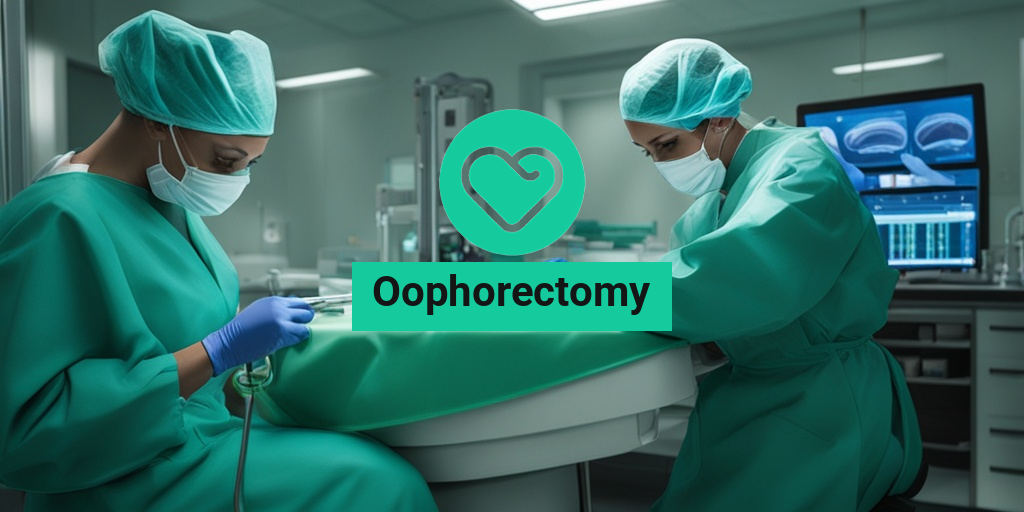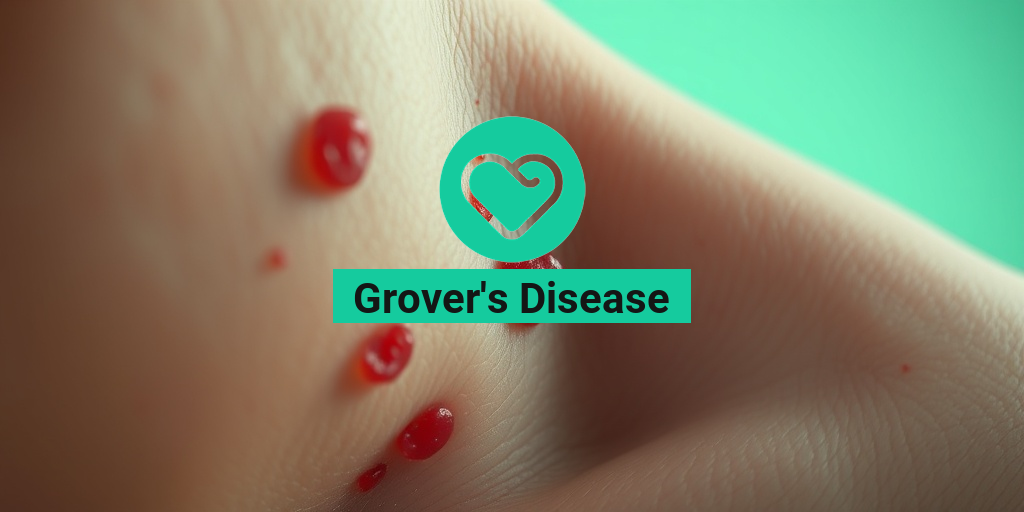What is Oophorectomy?
Oophorectomy is a surgical procedure that involves the removal of one or both ovaries in a woman’s body. The ovaries are responsible for producing eggs and hormones, such as estrogen and progesterone, which play a crucial role in the female reproductive system. The procedure is usually performed to treat various medical conditions, including ovarian cancer, ovarian cysts, and endometriosis.
In some cases, oophorectomy may be performed as a preventive measure to reduce the risk of ovarian cancer in women who have a high risk of developing the disease due to genetic mutations or family history. Additionally, the procedure may be performed in conjunction with a hysterectomy, which is the removal of the uterus.
Oophorectomy can be classified into two main categories: unilateral oophorectomy, where only one ovary is removed, and bilateral oophorectomy, where both ovaries are removed. The type of oophorectomy performed depends on the underlying medical condition and the individual’s overall health.
Oophorectomy Pronunciation and Meaning
If you’re wondering how to pronounce oophorectomy, it’s “oh-oh-fuh-REK-tuh-mee”. The term “oophorectomy” comes from the Greek words “oophoros,” meaning ovary, and “ektomia,” meaning removal.
Oophorectomy Definition and ICD-10 Code
The International Classification of Diseases (ICD-10) code for oophorectomy is 0UT40ZX. This code is used to classify the procedure for billing and insurance purposes.
Types of Oophorectomy
There are several types of oophorectomy procedures, including:
Laparoscopic Oophorectomy
This is a minimally invasive procedure where small incisions are made in the abdomen, and a laparoscope (a thin, lighted tube with a camera) is inserted to visualize the ovaries. The ovaries are then removed through the small incisions.
Open Oophorectomy
This is a traditional surgical procedure where a larger incision is made in the abdomen to access the ovaries. The ovaries are then removed through the incision.
Robotic-Assisted Oophorectomy
This is a type of laparoscopic oophorectomy that uses a robotic system to assist the surgeon during the procedure. The robotic system provides a 3D view of the ovaries and allows for more precise dissection and removal.
It’s essential to discuss the type of oophorectomy procedure with your healthcare provider to determine the best approach for your individual situation.
If you’re considering oophorectomy or have questions about the procedure, it’s crucial to consult with a healthcare professional who can provide personalized guidance and support. Additionally, resources like Yesil Health AI (yesilhealth.com) can provide evidence-based health answers to help you make informed decisions about your health.
🏥💊
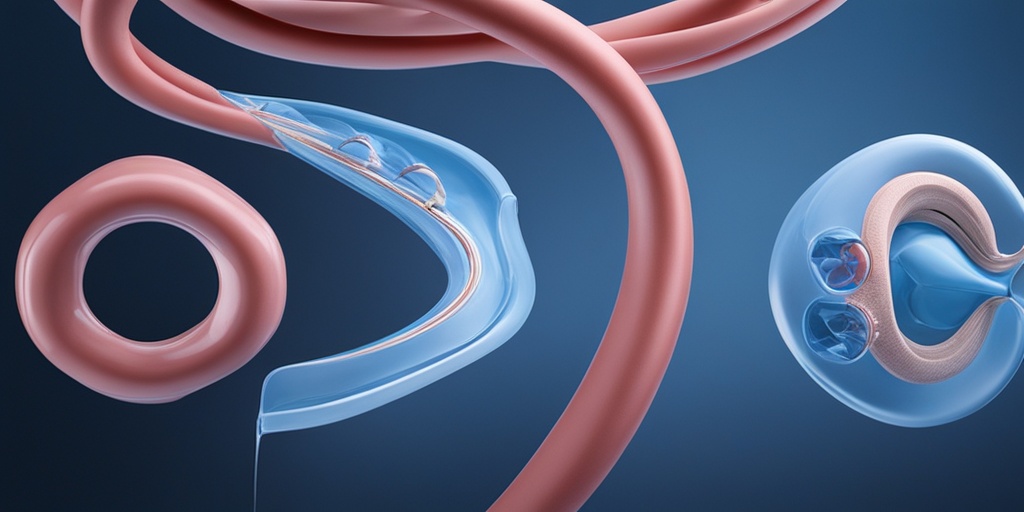
Reasons for Oophorectomy
Oophorectomy, the surgical removal of one or both ovaries, is a serious medical procedure that is typically recommended as a last resort to address certain health conditions or risks. So, what are the reasons that may lead a doctor to suggest oophorectomy?
Cancer Prevention and Treatment
Ovarian cancer is one of the most common reasons for oophorectomy. If you have a family history of ovarian cancer or have a genetic mutation that increases your risk, such as BRCA1 or BRCA2, your doctor may recommend oophorectomy as a preventive measure. Additionally, if you’ve been diagnosed with ovarian cancer, oophorectomy may be necessary to remove the tumor and prevent the cancer from spreading.
Benign Ovarian Tumors
Benign ovarian tumors, such as ovarian cysts, can cause symptoms like pelvic pain, bloating, and heavy bleeding. If these tumors are large or causing discomfort, oophorectomy may be necessary to remove them.
Endometriosis
Endometriosis is a condition where tissue similar to the lining of the uterus grows outside the uterus, leading to pain, heavy bleeding, and infertility. In some cases, oophorectomy may be recommended to remove the ovaries, which can help alleviate symptoms and improve fertility.
Family History of Ovarian Problems
If you have a family history of ovarian problems, such as ovarian torsion or ovarian failure, your doctor may recommend oophorectomy as a preventive measure to reduce your risk of developing these conditions.
Hysterectomy
In some cases, oophorectomy may be performed in conjunction with a hysterectomy, the surgical removal of the uterus. This is often the case when a woman is undergoing a hysterectomy for conditions like uterine cancer or endometriosis.
Oophorectomy Risks and Complications
While oophorectomy can be a life-saving procedure, it’s not without risks and complications. It’s essential to understand the potential risks and benefits before making a decision.
Immediate Risks
As with any surgery, there are immediate risks associated with oophorectomy, including:
- Bleeding and infection
- Adhesions, which can cause bowel obstruction or other complications
- Damage to surrounding organs, such as the bladder or intestines
- Reaction to anesthesia
Long-term Risks
In addition to immediate risks, oophorectomy can also lead to long-term complications, including:
- Early menopause, which can increase the risk of osteoporosis and heart disease
- Hormonal imbalance, which can lead to symptoms like hot flashes and vaginal dryness
- Infertility, as the ovaries are responsible for producing eggs
- Emotional and psychological changes, such as depression and anxiety
It’s essential to discuss these risks and complications with your doctor to determine if oophorectomy is right for you. 💊
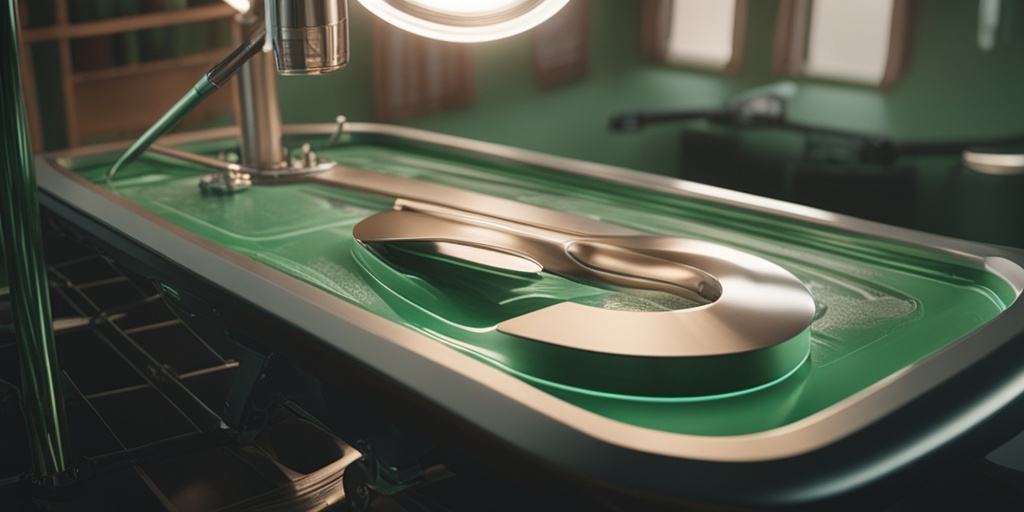
Preparing for Oophorectomy Surgery
Are you scheduled to undergo an oophorectomy, a surgical procedure to remove one or both ovaries? 🤕 Preparing for the surgery can help reduce anxiety and ensure a smooth recovery. In this section, we’ll guide you through the essential steps to take before the operation.
Understanding Your Diagnosis
Before we dive into the preparation process, it’s crucial to understand why you need an oophorectomy. Your doctor may have recommended the surgery to treat various conditions, such as:
- Ovarian cancer or tumors
- Ovarian cysts or torsion
- Endometriosis
- Chronic pelvic pain
- Family history of ovarian cancer (prophylactic oophorectomy)
Make sure you discuss your diagnosis and treatment options with your doctor to clarify any doubts or concerns.
Medications and Pre-Surgery Instructions
Your doctor may advise you to:
- Stop taking certain medications, such as blood thinners or hormone replacement therapy (HRT), a few days before the surgery
- Take antibiotics to prevent infection
- Shower or bathe with an antibacterial soap the night before or the morning of the surgery
- Avoid eating or drinking for a certain period before the operation
Follow your doctor’s instructions carefully to minimize the risk of complications during and after the surgery.
Lifestyle Changes
In the days leading up to the surgery, consider making some lifestyle adjustments to aid in your recovery:
- Avoid heavy lifting, bending, or strenuous activities
- Get plenty of rest and prioritize sleep
- Eat a balanced diet rich in fruits, vegetables, and whole grains
- Stay hydrated by drinking plenty of water
These simple changes can help your body prepare for the surgery and reduce the risk of post-operative complications.
What to Expect During Oophorectomy Surgery
The day of the surgery has arrived, and you’re probably wondering what to expect during the procedure. 🤔 Here’s an overview of what will happen:
Surgical Approach
There are two common surgical approaches for an oophorectomy:
- Laparoscopic oophorectomy: A minimally invasive procedure where small incisions are made, and a laparoscope (a thin, lighted tube) is inserted to visualize the ovaries
- Open oophorectomy: A traditional surgical approach where a larger incision is made to access the ovaries
Your doctor will discuss the best approach for your specific situation.
Anesthesia and Pain Management
You’ll receive general anesthesia to ensure you’re comfortable during the procedure. 💉 Your anesthesiologist will discuss the options with you and answer any questions you may have.
Surgical Procedure
The surgery typically takes 1-2 hours to complete, depending on the complexity of the procedure. During the operation:
- The surgeon will make the necessary incisions and access the ovaries
- The ovaries will be carefully removed, and any additional procedures, such as a salpingectomy (removal of the fallopian tubes), may be performed
- The incisions will be closed, usually with sutures or staples
After the surgery, you’ll be taken to the recovery room where you’ll be monitored for a few hours before being discharged or transferred to a hospital room.
Remember, it’s essential to follow your doctor’s instructions and advice to ensure a smooth and safe recovery. 💕
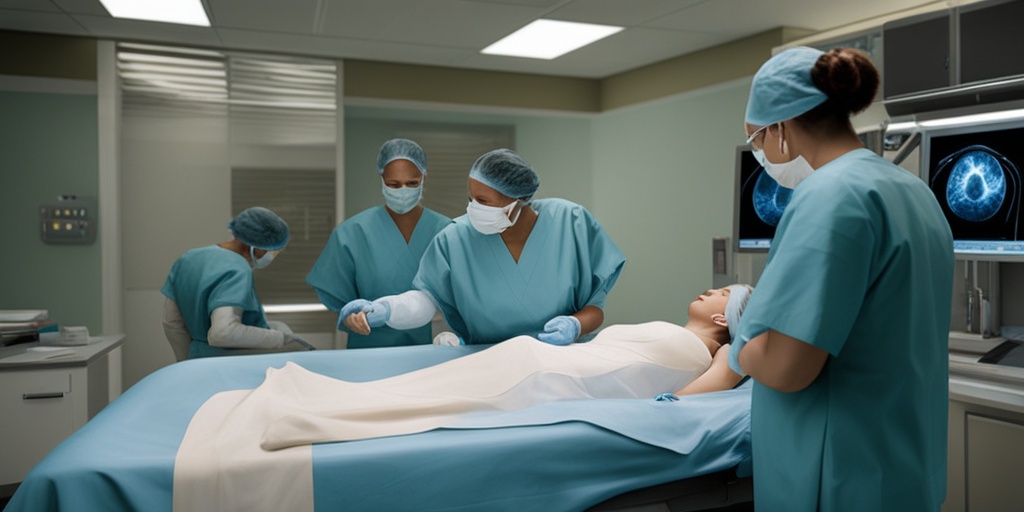
Oophorectomy Recovery Time and Process
Undergoing an oophorectomy, a surgical procedure to remove one or both ovaries, can be a life-changing experience. While the surgery itself is a significant step, the recovery process is just as crucial. In this article, we’ll delve into the oophorectomy recovery time and process, helping you understand what to expect during this critical period.
Immediate Post-Surgery Recovery (0-2 weeks)
After the surgery, you’ll be taken to the recovery room where you’ll be monitored for a few hours. You may feel groggy, tired, and experience some discomfort or pain. This is normal and can be managed with medication. It’s essential to follow your doctor’s instructions regarding pain management and medication.
In the first few days, you may experience:
- Bloating and swelling in the abdomen
- Pain or discomfort in the abdomen, pelvis, or vagina
- Fatigue and weakness
- Constipation
- Emotional changes, such as mood swings or anxiety
Short-Term Recovery (2-6 weeks)
As you progress through the recovery process, you’ll start to feel better. However, it’s crucial to remember that everyone’s recovery is unique, and it may take some time to get back to your normal routine.
During this period, you may experience:
- Gradual improvement in energy levels
- Decreased pain and discomfort
- Return of bowel and bladder function
- Emotional ups and downs, but with a more stable mood
Long-Term Recovery (6 weeks and beyond)
After six weeks, you’ll likely start to feel more like yourself. However, it’s essential to remember that full recovery can take several months.
During this period, you may experience:
- Return to normal activities, including work and exercise
- Improved emotional well-being
- Resolution of any remaining symptoms, such as bloating or constipation
- A sense of normalcy and routine
Life After Oophorectomy: What to Expect
While the recovery process is a significant aspect of oophorectomy, it’s essential to understand what life will be like after the surgery. In this section, we’ll explore the physical and emotional changes you may experience.
Physical Changes
After an oophorectomy, you may experience:
- Menopause, if both ovaries are removed
- Changes in hormone levels, which can affect libido, mood, and energy
- Increased risk of osteoporosis and heart disease
- Changes in body shape and weight distribution
Emotional Changes
The emotional impact of oophorectomy can be significant. You may experience:
- Grief or loss, especially if you’re no longer able to bear children
- Anxiety or depression related to the surgery and its aftermath
- Changes in self-image and body identity
- Emotional ups and downs, especially during the initial recovery period
Remember, every individual’s experience with oophorectomy is unique. It’s essential to stay connected with your healthcare provider and support system to navigate any challenges that arise during the recovery process and beyond. 💕

Frequently Asked Questions about Oophorectomy
What is Oophorectomy?
Oophorectomy is a surgical procedure that involves the removal of one or both ovaries. It is often performed to treat various medical conditions, such as ovarian cancer, ovarian cysts, or endometriosis.
What is the difference between Oophorectomy and Salpingectomy?
Oophorectomy involves the removal of the ovaries, while salpingectomy involves the removal of the fallopian tubes. In some cases, both procedures may be performed together, known as a salpingo-oophorectomy.
What is the ICD-10 code for Oophorectomy?
The ICD-10 code for oophorectomy is 0UT40ZX-0UT43ZX, depending on the specific procedure and laterality (left or right ovary).
What is the CPT code for Oophorectomy?
The CPT code for oophorectomy varies depending on the specific procedure and the surgeon’s approach. Common CPT codes for oophorectomy include 58951, 58956, and 58957.
What is the medical definition of Oophorectomy?
Oophorectomy is a surgical procedure that involves the removal of one or both ovaries, often performed to treat various medical conditions, such as ovarian cancer, ovarian cysts, or endometriosis.
How long does it take to recover from Oophorectomy?
The recovery time for oophorectomy varies depending on the individual and the type of procedure performed. Generally, it can take 4-6 weeks to recover from an oophorectomy.
Can I still get pregnant after Oophorectomy?
If only one ovary is removed, it may still be possible to get pregnant naturally. However, if both ovaries are removed, pregnancy will not be possible without the use of donor eggs or adoption.
Will I experience menopause after Oophorectomy?
If both ovaries are removed, menopause will occur immediately. If only one ovary is removed, menopause may occur earlier than expected, but the exact timing depends on various factors, including the individual’s age and overall health.
What are the risks and complications of Oophorectomy?
Risks and complications of oophorectomy include bleeding, infection, adhesions, and damage to surrounding organs. It is essential to discuss the potential risks and benefits with a healthcare provider before undergoing the procedure.
What is the pronunciation of Oophorectomy?
The pronunciation of oophorectomy is oh-oh-fuh-REK-tuh-mee. 🗣️
What is the meaning of Oophorectomy?
Oophorectomy refers to the surgical removal of one or both ovaries, often performed to treat various medical conditions, such as ovarian cancer, ovarian cysts, or endometriosis.
Remember to consult with a healthcare provider for personalized information and guidance on oophorectomy. 💊

